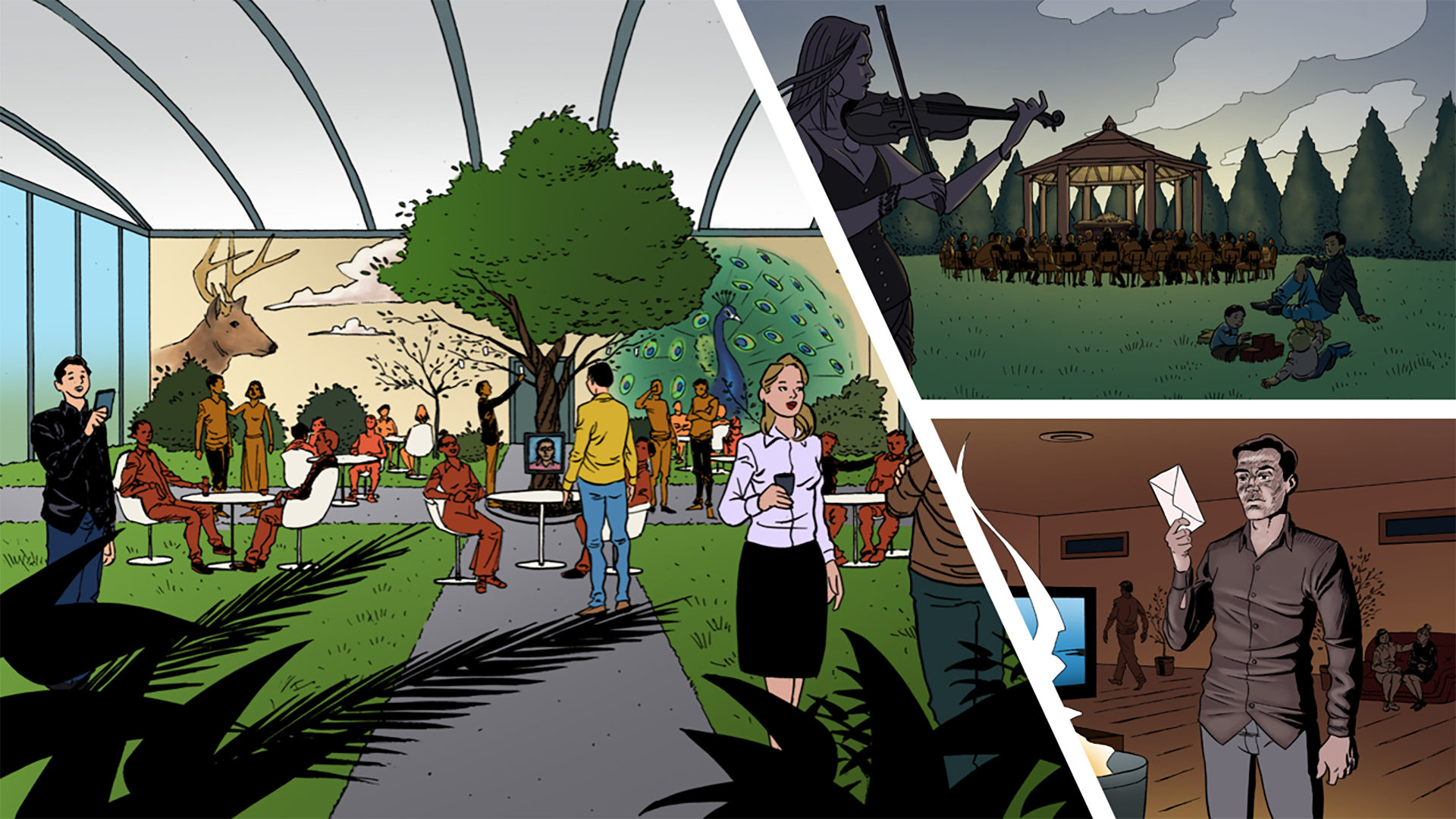When did you last go to a funeral? How was it?
What was the experience like? Was it well designed?
Funerals are so entrenched in tradition, that you might not normally think to ask these kinds of questions. Funerals are just what we do when someone dies.
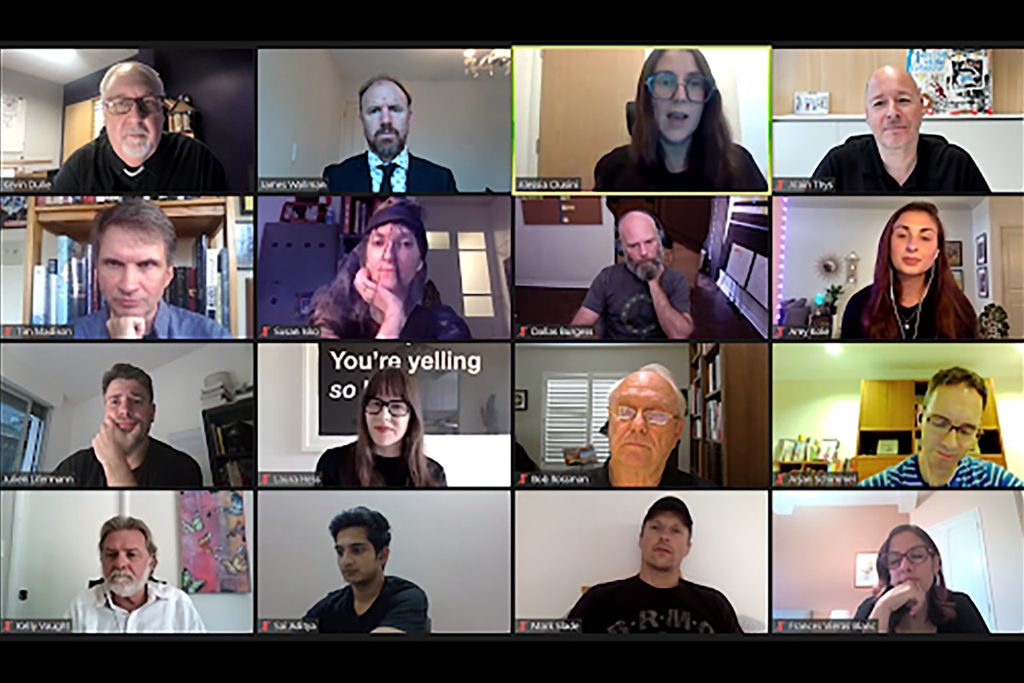
But someone who is questioning why we follow the same script is experience architect Alain Thys. A founding member of The WXO, in his day job Thys helps international organisations like Lexus, Vodafone, McLaren and Bordeaux wines to drive profit through CX, EX and SX – also known as customer, employee and shareholder experience.
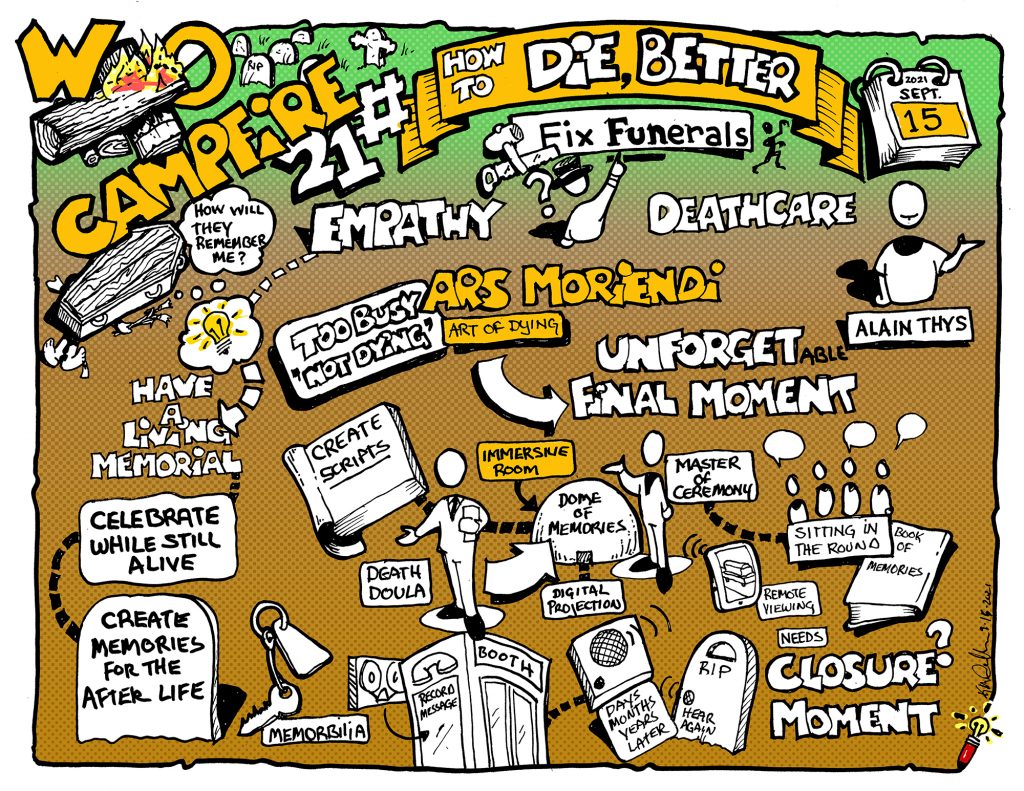
However, Thys is also the founder of Agents of A.W.E., a venture studio dedicated to transformative experiences that “intervenes where orthodoxy obstructs beauty, happiness and wellbeing.” His studio starts by looking at problems in the world that need solving, and then tries to find the business model to support them.
The High Price of Banishing Death
And when it comes to funerals, Thys thinks the modern West has a big problem. We’ve tried to banish death – but this comes at a high price. Four prices, actually:
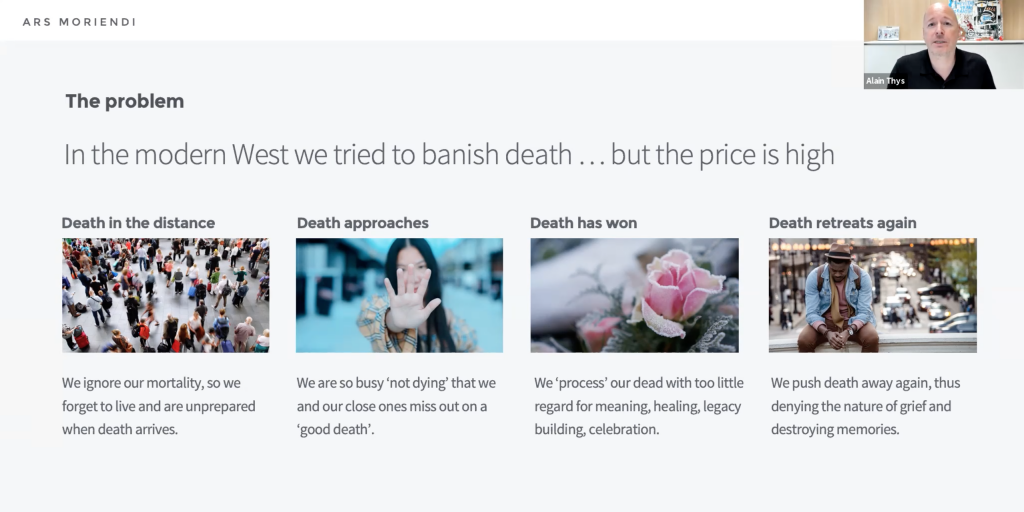
- We put death in the distance. Not talking about death might make us feel good, but it also makes us forget that tomorrow we could be dead. We forget to live, and are unprepared when death arrives.
- We reject death’s approach. We become so maniacal about staying alive, that we rob people of a “good death”, where they might find closure or peace.
- We process our dead with little regard for meaning, healing or legacy. We follow the same traditions and templates without thinking.
- We push grief away. Because we don’t want to talk about the dead, we forget our memories of them – the only real way to keep them alive.
Welcome to the ‘Magic Mountain of Death’
Thys wants to reimagine death care for the next generation. And he wants to do this at scale, shifting the entire industry by building a “Magic Mountain of death”: the ultimate funeral experience backed by profound thinking.
“We want to take the pain that goes with funerals and turn it into magical memories. We want to inspire Western death care providers by showing them a different reality, then gradually get them to change their ways.”
Alain Thys, experience architect
We asked Thys to share his orthodoxy-busting storyboard for an alternative funeral experience with our Campfire, so we could see what ideas we might be able to borrow to create better experiences, everywhere – not just funerals.
As it’s still in development, we can’t share everything he told us here. While a key aspect of the WXO’s mission is to spread insights and approaches so the world is filled with better experiences, we also respect our IP. According to the “Chatham House Campfire Rule” of the WXO Campfires – adapted from the original Chatham House rule which is designed to “encourage inclusive and open dialogue in meetings” – everyone who attends has the right to strike something from the record, either live or within an hour of the Campfire ending, as well as use the space as a live prototyping tool.
But what we can tell you is…
The BEE Rules at funerals

Okay, let’s go back to the last funeral you went to. Think of the B of the ‘BEE Rules’. (In case this sounds like jargon: the BEE rules are an adptation of the peak-end rule. Developed by WXO Founder James Wallman, the aim is to more accurately reflect the three key moments that are likely to have a large impact on our post-event memories: beginnings, extremes, and endings.)
- Let’s start with the B of the BEE. How was the beginning? Did you feel awkward? Unsure? As you arrived, did the venue look and feel like drab, uninspiring copycat of every other funeral you’ve been to?
Thys’s radical new design makes the beginning far more welcoming. His holistic design uses a mix of people and technology to care for mourners for all of the BEE moments. To begin, imagine a sort of concierge who doesn’t sit behind her desk but comes out to talk with you, or a maitre d’ who actually cares.
By doing this, Thys’s design caters to different levels of emotion that different mourners may be feeling, and help them adjust. This reminds us of Annette Mees’s idea of creating a “staircase” into an experience, rather than a threshold, which she shared at Campfire 12. It sounds like a practical, caring way to let people take as many or as few steps down into their grief as is relevant for them.
- Next, consider the first E of the BEE rules. How were the extremes handled? Were they given the space – physical, emotional, spiritual – to become all that they needed to be? Thys’s a funereal team of people and technology are designed to enable and craft different moments.
- And so to the second E: How was the ending? Do you even remember much beyond the sad shuffle out?
Thys’s philosophy is to “go out with a bang” and create new memories. Rather than a crushing ending filled with sorrow, followed by a rude awakening into the outside world, he imagines creating a pathway of candlelight and introducing different spaces designed to help people adjust out of the experience – a staircase back into the world that mirrors. in some way, the staircase on the way in.
Perhaps, Thys suggests, we shouldn’t have an “ending” in the traditional sense at all, but instead create memories and mementos of the dead and organise follow-up events that focus on the grievers rather than the deceased, to continue the process of healing and keep their memory of the deceased alive.
Use technology to pull people into the moment

At Campfire 14, there was a lively discussion about how technology can help bring people’s focus into the present moment, rather than creating distance. In his ‘Magic Mountain of death’. and all re-designed places that host funerals, Thys will use technology and lighting to elicit different feelings, bring memories to life, create new memories, and create a shared story for the mourners. The result, he says, is a funeral that truly celebrates the deceased, as well as looks after the people who are still here – the “end users” of the funeral experience.
In practical terms, this means high-speed internet and decent audiovisual facilities as standard. So that people who cannot be physically present can attend and feel part of proceedings. And rather than a PowerPoint presentation of a person’s life, we could create a multisensory montage complete with scents and music. Maybe we use projection mapping to produce a beautiful, magical environment. Or blend the physical and digital worlds to create a canvas of memories or mementoes that last after the event itself and can even keep evolving, helping us to keep their memory truly alive.
Design for individuals, not orthodoxies

Thys reminds us that funerals are about the living as much as the dead – they are the ones who will experience it and have to live on afterwards. We should focus on what grievers really need and not be limited by orthodoxies determined by religion or history. Why do we still practice embalming in the US, for example – a practice that made sense when it was introduced during the Civil War, but is irrelevant today?
So Thys takes elements of traditional funerals, such as prayers or speeches, and modifies them to allow for different levels of grief, creating a space where people can volunteer to share their thoughts and stories, or simply just process their feelings and be silent. He creates different pathways and opportunities to engage as people move through spaces and stages of the ceremony, so they feel free to experience it as individuals within a community.
Challenges with the design
After Thys had shared his ideas, there was a unanimous, positive response. For instance:
“Beautifully designed. It’s a design built on empathy. It puts the mourners and the deceased at the heart of the experience.”
Frances Vieras Blanc
Since radical candor / candour is best if we genuinely want to improve, our Campfire wondered aloud if there might be some difficulties to overcome, such as:
- “I feel it will be cost-prohibitive. I mean the opportunity cost of this funeral experience is a normal funeral experience that people are used to and have been historically okay with. What I am trying to wonder is: would need equal demand?”
- “There is a risk that the various audio-visual elements could come across as garish. It would be interesting to see how the experience could flex for different tastes, preferences and emotional needs. Each funeral is different and might have different jobs-to-be-done for the people attending it.”
- “At first glance, it looked contrived. However, that may be due to our history of funerals being steeped in somber traditions.”
- “Almost everything here can be worked in to improve funerals, except the “in the round” concept. I do not see churches rebuilding to accommodate this. Unlike weddings, I think people will still choose funeral venues associated with religion.”
9 design tools for all experiences
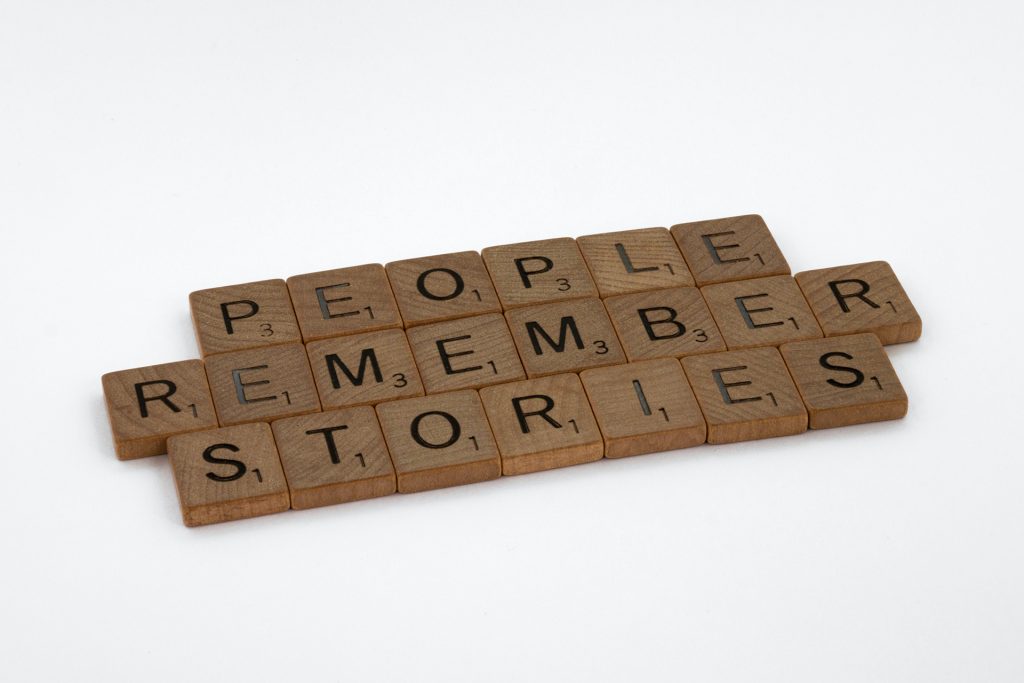
At the WXO we believe that since all experiences have the same end users in common – that is, humans – that experience design tools are transferable. Our Campfire spotted echoes of many design tools in Thys’s design, and ideas they could use for many other experiences, including:
- Memory anchors to extend the experience
Does ‘merch’ – as in merchandise – really have a place at a funeral? Strange to think but perhaps the answer is ‘yes’ – if it’s the sort of “memory anchor” that Bob Rossman introduced in Campfire 1. Or perhaps the answer’s also ‘yes’ if we see it as the final E of the 5E approach in Joe Pine and Jim Gilmore’s The Experience Economy – ‘extending’ – as discussed in Campfire 12. Particularly in cremations, where there might not be a physical resting place, these kind of mementoes could help people feel connected to the deceased. This element of Thys’s design resonated with the Campfire.
“I like the concept of a gift for the guest that encourages follow up sharing of the use/placement of said gift,” said Arjan Schimmel.
“One of my favorite tools is the keepsake gift. I think it’s crucial to offer a participant some sort of goodbye gift at the end of an experience to help them carry the experience onward. - What comes after the experience
Should a funeral only look backward, at the life of the deceased, or should it look forward, too? Good experience design considers not only the present, but the future. We’ve heard echoes of this in the discussion of transformation at Campfire 7, where we asked “Is it possible to design transformation?”.
- The ‘R’ of the STORIES framework
Consider the ‘R’ of James Wallman’s STORIES framework for experience design, “relationships”. It’s clear that if a funeral is seen as a place and time to simply remember the past, rather than an opportunity to to affirm and build relationships and create community, it’s a suboptimal experience. One way to do that could be through music… - Music for a shared moment
“I really liked the idea of playing music that’s specific to the lost one,” WXO Founding Member Sai Aditya commented. Music could be used in more siituations to enhance experiences by nudging people to forget their individuality and become one with the group.
“Say at Christmas you are boarding a flight,” says Aditya. “And then prior to the pilot’s announcement, Silent Night Holy Night plays, and what happens is that we use the shared context of music there. And then the crew and the entire flight joins in unison as the plane taxis… now that would be wonderful!” - Augment the experience with ritual and symbols
“I think we can learn from the power of rituals,” says Aditya. “With factory tours or educational tours in general, we can clearly add moments of symbolism or metaphors or history. For example, when people are entering the factory, we tell them that where you stand was where Henry Ford unveiled the world’s first car. That gives a jolt. As they move on, we tell them to wear a particular type of sash, and we tell them that when Henry Ford used to present his factory to others.. he used to make them wear sashes. Suddenly you are there with Ford, and so you have augmented the story and the normal factory-tour experience.” - Complete the trilogy: make space for reflection
Every well-made experience should follow the trilogy of participation – anticipation, participation, reflection – that Bob Rossman explained at Campfire 1.
“A very basic example, in a museum tour, I would make my audience go into an empty room where they get in touch with each other about the experience until now over drinks,” says Aditya. “That makes them better appreciate other view points and perspectives, automatically increasing the experience value because of new friends and increased awareness.”
A few examples of reflection perfectly realized: the bar at Secret Cinema’s Star Wars experience, every post-ski bar you’ve ever been to.
In Thys’ design, people were invited at the end to not only reflect together, but also share ‘silently’, even with the person who had died.
“The messages for the deceased cleverly fulfil a currently unaddressed need,” said WXO Founding Member Arjan Schimmel. “This concept or thinking might be interesting for other experiences where people need to ‘let off steam’.” - Don’t always make it fun
Schimmel picked up another key learning from Thys’s design:
“Not all experiences are, or should be fun,”he noted. “Some experiences have different jobs-to-be-done.”
So before designing your experience, ask yourself, what is your experience supposed to do for people? [Note: we are planning a Campfire on how jobs to be done theory is useful for the design of experiences.] - A host makes the most of any experience
“The idea of having a host is one I have always embraced,” commented Schimmel. “People are permitted to explore, yet have a concierge when they need one too.”
See also Peter Holst-Beck’s thoughts, in a fantastic, exclusive article for the WXO, on the ‘Six Things You Can Do Today To Enable More Immersive Experiences‘. - Micro-experiences lead to better design and better experiences
The new funeral design that Thys shared breaks the funeral into different stages.
“Making the design a succession of micro experiences, each as a module in its own right – yet each making a unique contribution to the overall macro experience – enables people to pick and choose among them,” said WXO Co-Founder Bob Rossman. Found out more about micro-experiences, in Aga Szostek’s thoughts in Campfire 5.
The WXO Take-Outs
- Where have you come across something that’s held back by orthodoxy? Does it really have to be the way it’s always been done?
- Thys’s work is a prime example supporting the WXO’s core belief that experientialism and experience design will transform society as dramatically as materialism did. Just as materialism transformed standards of living, so experientialism will transform quality of life. Experience designers are at the forefront of this as each of us asks: “How might we make this experience better?”
- Always remember to ask: who is the real customer here?
How can you design for their needs first? - How might you make your experiential ideas scale?
Thys’s approach of creating a pilot or prototype designed to shift an entire industry strikes us as very useful.
Alain Thys is actively looking for interested partners. Please visit his page in the WXO Black Book for more details and to get in touch.
Interested in taking part in discussions about experiences and the Experience Economy? Apply to become a member of the WXO here – to come to Campfires, become a better experience designer, and be listed in the WXO Black Book.

